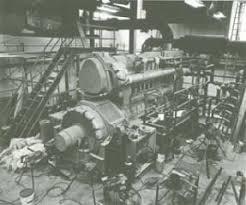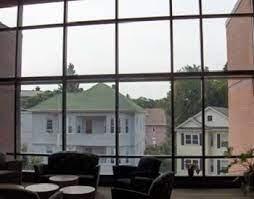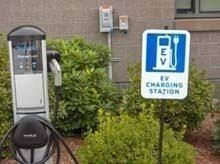Background
Clark University is known as the home of space flight, where physics professor Robert Goddard developed and tested the first liquid-fueled high altitude rockets in the early 1900’s. Inquiry, innovation and responsible global citizenship continue to be core cultural values at Clark today. The university is home to two prestigious research institutes: the George Perkins Marsh Institute, focusing on the relationship between humanity and nature, and the Mosakowski Institute, which focuses on the effectiveness of addressing social concerns. The university has also engaged in numerous innovative and collaborative research initiatives focused on issues of sustainability, such as the Human-Environment Research Observatory (HERO), the Polaris Project, and the Foster-Baker Lab). Clark Labs and the university’s geography department pioneered the widely-used IDRISI GIS geospatial software with applications to track environmental impacts on a global scale. Clark offers undergraduate and graduate majors with concentrations in areas of environmental, economic and social sustainability, including the interdisciplinary International Development, Community and Environment program and a new MBA concentration in Sustainability from Clark’s Graduate School of Management.
Energy

Clark University cogeneration plant
A dual fuel (diesel/natural gas) cogeneration system, originally suggested by students and one of the first to be grid-connected in the nation (1982), supplied up to 70 percent of the campus’ power and thermal demand. The Integrated Community Energy System captures waste heat that would otherwise be dumped into the environment for use in heating and hot water, using the original fuel nearly twice as efficiently as in conventional systems.1 Three high-pressure steam boilers that have primarily used oil in the past also feed steam to 16 buildings. Thermal energy consumption per square foot was reduced nearly 15 percent from 2004 to 2006 by a series of investments ranging from steam line repairs to new windows and air-lock doorways. By 2005, Clark was already on its third generation of lighting upgrades, had started building two LEED certified buildings,2 and monitored campus energy consumption with building sub-metering and a real-time energy management system. Building envelope upgrades, distribution equipment maintenance, energy efficiency upgrades, and capital investments have continued to the present and are considered part of normal operations. As measured in millions of BTUs, total on-campus energy use – including both produced and purchased thermal and electrical energy - declined 18 percent from 2005 to 2010, even as new buildings were added and the campus population increased.

The Lasry Center for Biosciences, LEED Gold certified, makes use of natural lighting as one of its energy efficiency measures
Recent initiatives have included replacing electric heat with hot water fed from the cogeneration plant, installing energy efficient vending machines, and replacing fan motors in the Goddard Library HVAC system with Variable Frequency Drives (VFDs). Between 2009 and 2011, the University invested $1.5 million in energy efficiency upgrades, including the installation of additional VFDs, a power management system for campus computers, kitchen and lab equipment upgrades and LED lighting. In 10 high-use buildings, in the first six months after completion of work, energy consumption was reduced by 14 percent, or 375,785 kWh, saving the university $37,600. In Clark’s LEED Gold laboratory building, the Lasry Center for Bioscience, retro-commissioning alone produced electric and thermal savings of approximately $5,000 in three months, with an estimated annual savings of $21,000. The lighting improvements made in 39 buildings as a part of these upgrades have contributed to 625,413 kWh or $62,000 in annual savings.
Additionally, the installation of low-flow shower heads and lowflow sink aerators in nine residential halls have saved the university approximately 9170 therms and $51,000 annually in reduced water heating costs. In keeping with Clark’s collaborative culture, students are part of the solution. According to Michael Dawley, Director of Physical Plant, “Our staff consistently works with students to develop and implement energy saving projects. The collaborative process between students and staff not only helps us save energy, it provides valuable learning experience to help them meet tomorrow’s challenges and opportunities.”
Climate Action Plan
In 2007 Clark’s President John Bassett signed the American College and University Presidents’ Climate Commitment, which is a nationwide effort among colleges and universities to commit to climate neutrality and eliminate net greenhouse gas emissions. The Environmental Sustainability Task Force, a group of faculty, administrative staff and students that work to promote sustainability on campus, published its first Environmental Sustainability Report in that year, detailing research on campus resource consumption. Additionally, Clark’s Climate Action Plan committed the institution to carbon neutrality (zero greenhouse gas emissions) by 2030. This goal and a roadmap of mitigation strategies provides impetus for real action, but because educational institutions have transient populations and commuting patterns, and technology is continually evolving, the Climate Action Plan is viewed as a living document. The Task Force is currently re-evaluating the very mitigation strategies proposed only a few years ago.
Recent actions stemming from the Climate Action Plan include installing occupancy sensors and building retrocommissioning, a systematic process that identifies operational and maintenance improvements in existing buildings to ensure current usage meets design intentions. In the first nine months following project completion in key buildings, energy savings and emissions reductions were 15 percent below baseline energy consumption numbers, exceeding engineers’ projections. Switching fuel from oil to natural gas in the central plant helped to reduce total campus greenhouse gas emissions by 7.6 percent in 2010 compared to 2009. Due to the long-standing focus on campus energy use, greenhouse gas emissions as measured in carbon dioxide equivalents have decreased 25.5 percent from the Climate Action Plan baseline year of 2005 to 2011. However as enrollment grows and technology changes, Clark is determined to closely monitor their energy consumption to ensure that this trend continues.
Student Initiatives
Waste Management and Recycling
In 1992, Clark started a campus-wide recycling program, run by students, which has continued to expand in scope and scale on campus over the decades. Between 2004 and 2006, total trash was reduced by 14 percent after compactors and dumpsters were locked to minimize unauthorized dumping; increased promotion of recycling, and the distribution of desk-side recycling bins. From 2010 to 2011, the recycling rate increased to 29 percent of all waste, as a result of custodial training, student initiatives, a new recycling center, and new waste management contracts that benefit Clark for recycling rather than sending waste to landfill. Due to a student research initiative, all food waste from dining services was diverted to a composting operation beginning in 2007, reaching 206 tons in 2011.
Grounds and Facility Care

Rain garden near the Office of Admissions
A rain garden to reduce stormwater pollution was planted outside the school’s Admissions Center in April, 20124. Designed by students as part of a course entitled “The Sustainable University”, the garden’s creation was a collaboration with the city of Worcester, Worcester Polytechnic Institute, and others. The Grounds department has phased in organic landscaping practices, propane mowers and native species. Additionally, in recent years custodial services have switched to green cleaning products.
Residential Life and Beyond
Additional student initiatives run by Clark’s Eco-Reps such as Powerdown Competitions are popular on campus and bring long-term awareness and behavior change. New in 2011 was a Green Room Audit program, managed in collaboration with GreenerU, a campus sustainability and energy solutions provider, wherein students, trained by campus electricians and HVAC staff, “audit” the dorm rooms of their peers and advise on energy conservation practices. True to the Clark core value of responsible citizenship, students have also extended their sustainability initiatives into their surrounding community. Clark has a long history of community involvement, supporting Worcester’s social and economic sustainability with a range of initiatives including the University Park Elementary School, the Main South Community Development Center, the Institute for Energy and Sustainability, and the Small Business Development Center. More than half of Clark students participate in internships or volunteer in the community, thus helping to foster sustainability initiatives and behavior beyond the ‘learning laboratory’ of campus. In 2006, the student-run Clark Sustainability Initiative coordinated a student purchase of renewable energy certificates (RECs), helping to promote the development of wind power in New England.
Recent Developments and Results

The new electric vehicle charging station outside the Lasry Center for Biosciences.
Currently, Clark is on track to exceed its interim goal of a 20 percent reduction of 2005 emission levels by 2015. Clark installed Worcester’s first electric vehicle charging stations. In 2013, Clark will upgrade the aging cogeneration machine with a larger and more efficient engine, which is expected to further decrease emissions and supply a larger percentage of campus energy needs. Planning for a green roof demonstration project also began in 2011. Water-efficient showerheads and toilets were installed across campus, expected to reduce water consumption by 4 million gallons per year.

Clark's student-run thrift store
In 2010-2011, the student-run Clark Community Thrift Store diverted more than 11 tons of move-out ‘trash’ into retail value and Clark Dining Services won first place in MassRecycle’s statewide competition. This year Clark hosted conferences on green chemistry initiatives and institutional organics diversion. In 2011, the Sierra Club selected Clark University as the 17th ‘greenest school’ in the nation, and the Princeton Review placed Clark in the top tier of Green Colleges for the third consecutive year in 2012.
According to the Princeton Review, 49 percent of prospective students consider sustainability reputation when choosing a college. Clark’s vision for the future, emphasizing the connection between a liberal arts education and authentic engagement in the workplace and the world, and regarding the campus as a living laboratory where initiatives and research can have a global impact and where students, faculty and staff can collaborate in effective teams, provides what many are seeking. A recent survey received responses from 35 percent of students, faculty, and staff: many felt they were able to be greener at Clark than at home and expressed a strong ‘sustainability literacy’.
But the University not only sees enrollment and student achievement benefits, it considers improvements in environmental sustainability an investment in long term financial sustainability for the institution. “We may not have a giant solar array,” said Sustainability Coordinator Jenny Isler, “but we have the green beating heart of Clark: in our every action, we consider how we can make a difference and then we do it. Sustainability is just what we do; it is part of our culture and our future as we educate students to change our world.” Clark University’s president David Angel told OTA that “For Clark University, environmental sustainability is proof of concept that when our community mobilizes talent, knowledge, and commitment, we can make a difference in the world. Our work on environmental sustainability is a wonderful platform for students to develop and hone the skills and capacities that they will need to solve complex problems, turn ideas into action, and be accountable for results. The fact that we demonstrate leadership in this area elevates our reputation as a great university and a place of consequence in the world.”
- For a detailed history of Clark University's involvement in energy efficiency see DeCarolis, J.; Goble R.; and Hohenemser, C. 2000. "Searching for energy efficiency on campus" Environment 42: 4 9-20.
- All new construction, retrofit & additions at Clark are built to LEED silver standards.
Download
Published 2012